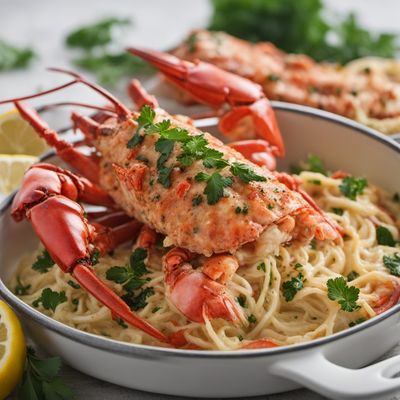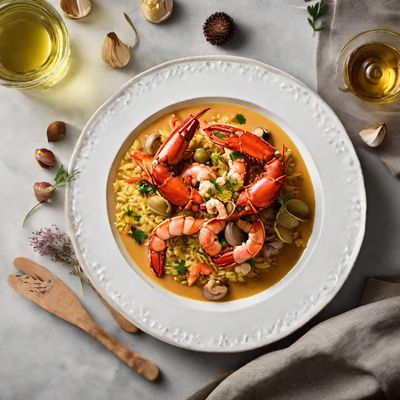
Ingredient
Lobsters
The King of the Sea
Lobsters are crustaceans with a hard exoskeleton, long antennae, and powerful claws. They have a sweet, tender meat that ranges in color from white to vibrant red when cooked. Their texture is firm yet delicate, and their flavor is often described as rich, buttery, and slightly sweet.
Origins and history
Lobsters have a long history as a luxurious food item. They were highly regarded by Native American tribes and were even used as fertilizer by early European settlers. Today, lobsters are considered a symbol of indulgence and are often associated with special occasions and fine dining experiences.
Nutritional information
Lobsters are low in fat and calories but high in protein, making them a nutritious choice. They are also a good source of vitamins and minerals, including vitamin B12, selenium, and zinc.
Allergens
Lobsters are known to cause allergies in some individuals, particularly those with shellfish allergies. It is important to exercise caution and consult with a healthcare professional if you have any concerns or known allergies.
How to select
When selecting lobsters, look for ones that are lively and active, with a hard shell and intact claws. Avoid lobsters that appear sluggish or have a strong ammonia smell. Additionally, choose lobsters that feel heavy for their size, indicating a higher meat-to-shell ratio.
Storage recommendations
To maintain the freshness of lobsters, store them in a cool, damp environment, such as a refrigerator or an ice-filled cooler. Keep them alive until ready to cook by placing them in a container with a damp cloth or seaweed. Cooked lobsters should be consumed within 2-3 days.
How to produce
Lobsters are typically caught in the wild, but they can also be farmed in controlled environments. To produce lobsters, specialized aquaculture techniques are employed, including hatcheries and grow-out systems that mimic their natural habitat.
Preparation tips
Lobsters can be prepared in various ways, including boiling, steaming, grilling, or baking. To enhance their natural flavors, consider serving them with melted butter, lemon juice, or garlic-infused sauces. Lobster meat is commonly used in dishes like lobster rolls, bisques, salads, and pasta sauces.
Substitutions
Crab meat can be used as a substitute for lobster meat in recipes that call for cooked lobster. However, keep in mind that the flavor and texture will differ slightly.
Culinary uses
Lobsters are highly versatile and can be used in a wide range of culinary applications. They are often featured in dishes like lobster bisque, lobster rolls, lobster pasta, lobster thermidor, and lobster salads.
Availability
Lobsters are commonly available in coastal regions and are heavily associated with New England cuisine in the United States. They are also popular in Canada, particularly in the Maritime provinces. Additionally, lobsters can be found in various other countries with access to coastal waters.
More ingredients from this category
Recipes using Lobsters » Browse all

Naga-style Spicy Lobster
Fiery Lobster Delight: A Taste of Naga Spice

Dublin Delight
Irish Whiskey-infused Lobster with Creamy Sauce

Luscious Lobster Delight
Savory Seafood Sensation

Togolese-style Vanilla Lobster
Savory Delight: Togolese-inspired Vanilla Lobster

Tropical Tuy Palovi
Island-Inspired Tuy Palovi: A Taste of the Turks and Caicos

Boiled Maine Lobster
Ocean Delight: Boiled Maine Lobster with Zesty Lemon Butter

Cypriot Lobster Thermidor
Mediterranean Delight: Cypriot Lobster Thermidor

Eggs Neptune with a Twist
Seafood Delight: Eggs Neptune with a Flavorful Twist

Hubei-style Spicy Lobster
Fiery Lobster Delight: A Spicy Hubei Twist

Maritime Glazed Lobster
Oceanic Delight: Maritime Glazed Lobster

Haute Cuisine Paella
Elevating the Classic Spanish Paella to Haute Cuisine Perfection

Haute Cuisine Dim Sum
Elevated Delights: Haute Cuisine Dim Sum